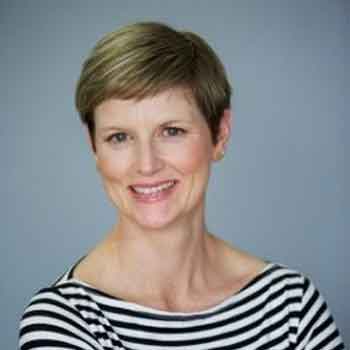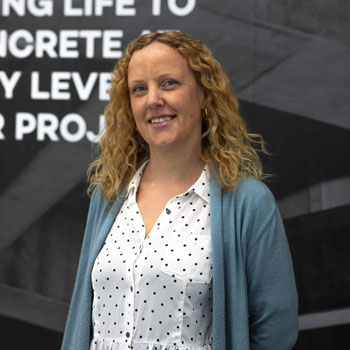Francesca walks us through what Green Star and ecolabelling actually mean. She explains the processes involved including considerations of both the product itself and the organisation’s overall operation. And we conclude with a case study! Where’s the most common place to see the ECNZ logo?!
Environmental Choice New Zealand
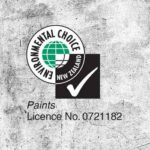
Invisible Strength
Environmental Choice New Zealand
/
RSS Feed
Environmental Choice New Zealand
Environmental Choice https://environmentalchoice.org.nz/
Resene case study https://environmentalchoice.org.nz/our-news/case-studies/resene-paints/
MARKHAM license https://environmentalchoice.org.nz/our-licensees/0721182-markham-distributing-ltd/
View the Transcript
VENUS: Well hi, everyone, welcome to the latest podcast of MARKHAM’s Invisible Strength series. We’re pleased to welcome our special guest Francesca Lipscombe! Francesca is the General Manager at the New Zealand Ecolabelling Trust, and they administer the Environmental Choice New Zealand programme. Francesca, could you tell us a bit about yourself? Some industry background and how you became involved in the programme?
FRANCESCA: Yes, absolutely. Thanks for having me. As you said, I’m the General Manager of the New Zealand Ecolabelling Trust. We have a contract with the Ministry for the Environment to administer their ecolabel Environmental Choice New Zealand, on their behalf. I’ve been in the role of General Manager for coming up six years now, but I’ve been with the Trust for almost nine years. Time flies!
Prior to that, I had a variety of sort of sales and marketing jobs in various industries, so this has been my first foray into sustainability, and I find the industry really interesting; obviously quite leading edge. You know that the Trust has been around for a long time, and I think that consumers, and industries in general, are really only catching up with sustainability issues and ecolabelling.
VENUS: Right, OK, that’s cool. Could you explain the Green Star building programme to our listeners and how Environmental Choice fits into that process?
FRANCESCA: Yeah, absolutely. So the New Zealand Green Building Council has a couple of different rating tools. One of those is Green Star, which is a rating tool that looks at the environmental impacts of building, and buildings.
Part of getting points under that rating tool, if you’re a builder or a specifier, an architect, is to choose products and materials that meet certain environmental credentials. So the Green Building Council does not audit or licence products and materials themselves. What they do is rely on independent third party labels like Environmental Choice New Zealand to provide that assurance that products meet certain environmental credentials across their whole life cycle.
VENUS: OK. So what are the characteristics of the ecolabel process?
FRANCESCA: The process is very stringent. So it’s certainly not something that’s easy to achieve. What we do is we set criteria that are based specifically on certain product and service categories, and take into account the environmental concerns or issues that are prevalent in that particular, or in those particular products and service categories; and we set criteria around those.
The process of getting an environmental choice eco label involves an on-site audit. So that is always the case when you first apply for a licence. We employ independent assessors or auditors to come on-site and assess all relevant aspects of the product supply chain, I guess, or manufacturing process.
VENUS: Does that take quite a long time, or is it monitored over a period or … yes, how long does that take?
FRANCESCA: Yes, as I say, the initial audit always involves an on-site component. But then there’s also all sorts of paperwork that an applicant would need to provide to support their application and it’s not a one-off order, so getting the Environmental Choice licence once doesn’t mean you can use it, you know, until the end of time. Every product that’s licenced under the label does need to be subjected to annual verification audits to ensure ongoing compliance.
VENUS: And Francesca, could you talk … go into a bit more detail about the process involved?
FRANCESCA: Yes, absolutely. The Environmental Choice label applies specifically to products and services, so it’s not an environmental management system. It doesn’t recognise an organisation as a whole; but there are some aspects of an annual audit that do take into account organisation-wide initiatives.
So when we’re talking about product-specific requirements, we look at things like raw material sourcing; the manufacturing process; which covers things like energy use, the waste generated, packaging, consumer information. In all of our specifications, there is a requirement for an end-of-life solution that is available in the country the product is being used – generally New Zealand – so specifications are very focused on the product.
But then we also ask any organisation with licenced products to report annually on their energy use and the waste they generated as a business.
And this is really to ensure that licenced companies are thinking more broadly about sustainability and thinking beyond the products and to some, you know some broader issues that they should be aware of and monitoring. And I guess justifying if there was a significant increase in energy use, or waste generated or, you know, issues like that.
So yes, we are asking organisations to prove their products meet certain environmental standards, but also that they are being responsible environmentally as an organisation as well.
VENUS: Yes, yes, I was talking with Hayden [Prestidge] yesterday, and he was touching on that a bit; saying about using an electric forklift; and we had skylights put into the back of our warehouse to cut down on energy consumption; recycling the drums that the products are in; and all that kind of stuff. So yes, it’s really interesting that all of that actually does play a part; and I think it just encourages people to get on that bus and it’s not just about a product. It’s about just looking after our planet and thinking outside the square.
FRANCESCA: Yes, definitely. And I think that very often, getting an Environmental Choice licence is a great motivator for staff. You know, it’s a feel good factor to know an organisation is, you know, considering the environment and doing the right things; and people really tend to get on board with that and enjoy the process.
VENUS: Yes definitely. When I’m at the supermarket buying cleaning products, if I see, say, something with the label I just always go for that product because I feel like I’m helping in some small little way.
FRANCESCA: Well done, yes. We can all make a difference by purely choosing the right products and there are enough options out there now that we can be more conscious consumers.
VENUS: Yes, that’s awesome.
OK. And I understand that the certification is respected internationally. Is that correct?
FRANCESCA: It is, yes. We are New Zealand’s only Type One ecolabel. There is a group called the Global Ecolabelling Network and we are a member of that network; and it’s a network of like-minded Type One ecolabels from all around the world.
So we have that international association, which is fantastic because it means we can share information with our international colleagues, particularly around developing new criteria in setting standards. We can also utilise the resources of our international colleagues to perform audits, when we have New Zealand companies manufacturing offshore; and then we also get a certain level of recognition by being a member of the Global Ecolabelling Network, which means that the Environmental Choice licence does carry some weight in other parts of the world as well.
VENUS: Cool, would you be able to talk us through a real-life case study?
FRANCESCA: Yes, yes, absolutely. I guess a great one, and in this context, and because they’ve been around for a long time, is Resene. So Resene got the Environmental Choice licence, even before the Trust that I work for was set up. So oh, I can’t … well over 20 years ago now.
And they have seen the spec, the paints specification, develop over time. So I guess it’s another thing to note is that our specifications are dynamic, as well, so every three to five years we review all of our specifications with the view to making them more stringent, more relevant, more meaningful; and pushing industries along towards, you know, less environmental harm as the years go on.
So Resene joined the programme way back in the early ‘90s and they have been through many iterations of the paint specification; and improve their product and their processes in order to comply with our requirements over time. And yes, it’s been a real success story. So they have … the Environmental Choice licence is “business as usual” for them now. They don’t develop a new product without considering the requirements that we set.
And when anyone asks me what I do, and I’m trying to try to describe the label, and where you can see it, the most visible use of the label is on the top of a Resene paint tin! And when I say that, almost everyone can capture what it looks like.
VENUS: I can, I can, yes I can, definitely! Oh, that’s funny. Oh, that’s really interesting.
So could you tell our listeners and how to get in touch if they wanted to move towards their own certification?
FRANCESCA: Yes, absolutely. The best place to start would be to check out our website, so that’s www.environmentalchoice.org.nz; or give us a call in the office on – Auckland – (09) 845 3330.
But yes, certainly start with the website. There’s lots of great information on there, and not only about the programme, but about the application process, and some great case studies on Resene and many of our other licensees. It’s a really good place to start.
VENUS: That’s really cool. Thank you for that, and we really appreciate that! I really appreciate you joining us today, Francesca, thank you for that! You’ve given us some valuable food for thought and action. And to all our listeners, don’t miss our next episode!
Want to Contribute?
Feedback on our podcasts? Suggestions for future topics? Looking for more information on topics we’ve discussed? Send us a message – we’ll be in touch within a day or two.
More about MARKHAM
MARKHAM are dedicated to providing innovations for concrete and construction. Focusing on concrete waterproofing solutions, penetrating concrete sealers and durability treatments for concrete.
Podcast Categories
Menu
Latest Episodes
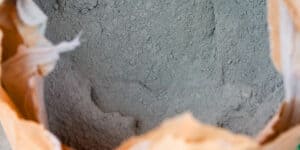
The Electric Vehicle of Cement Making
We’ve talked about this in other places, but cement manufacturing is a real problem child
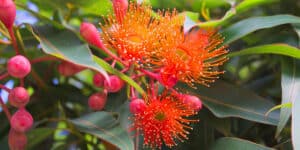
Eco Choice – People and Planet Focus
Environmental Choice New Zealand has had a makeover – now it’s called Eco Choice Aotearoa.
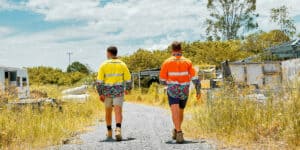
Starting Good Conversations
Have you seen those colourful Trademutt shirts on site? They’re a conversation starter! This is
invisible strength podcast
The whole MARKHAM team is pleased to present you with our podcast series, INVISIBLE STRENGTH. In this series of interviews, we’ll walk through the science and challenges of concrete durability, what goes wrong in the field – and the advanced methods available to restore and enhance service life to concrete construction.
INVISIBLE STRENGTH reflects a number of factors in concrete construction and durability. When things go wrong, the evidence can become very visible indeed. However, when all is going well, there’s nothing particular to be seen!
MARKHAM’s concrete treatments, too, are invisible once completed – and the result is the long internal, invisible durability of the concrete.
So join us as we explore the unseen world inside concrete – why it matters, and how it can be protected!
Stay Connected
Listen and subscribe to us on your favourite podcast platform, we're always adding new episodes!
Invisible Strength – The media site for MARKHAM – Adding Life to Concrete.
At MARKHAM, we’re on a mission to transform concrete and construction. Our Purpose? ADDING LIFE TO CONCRETE.
From innovative waterproofing solutions to penetrating hardeners and sealers, our focus is clear: to reinforce concrete structures and make them withstand the test of time.
Newsletter
Sign up for email updates on the latest collections, campaigns and videos.
